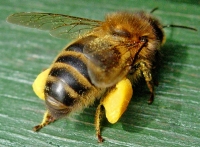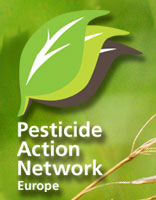 Biodiversity is on the decline worldwide. There is no doubt the exploded human production and consumption is at the cause of this (see ppt for an illustration of this under “Useful Information”). Agriculture, being the main user of land, is also the main cause of biodiversity decline.
Biodiversity is on the decline worldwide. There is no doubt the exploded human production and consumption is at the cause of this (see ppt for an illustration of this under “Useful Information”). Agriculture, being the main user of land, is also the main cause of biodiversity decline.
Research has shown pesticides have a strong relation with biodiversity loss in Europe (Flavia Geiger, Jan Bengtsson, Frank Berendse, Wolfgang W. Weisser, Mark Emmerson, Manuel B. Morales, Piotr Ceryngier, Jaan Liira, Teja Tscharntke, Camilla Winqvist, Sönke Eggers, Riccardo Bommarco, Tomas Pärt, Vincent Bretagnolle, Manuel Plantegenest, Lars W. Clement, Christopher Dennis, Catherine Palmer, Juan J. Oñate, Irene Guerrero, Persistent negative effects of pesticides on biodiversity and biological control potential on European farmland, Basic and Applied Ecology, Volume 11, Issue 2, March 2010, Pages 97-105 ).
Bees are especially hard hit and beekeepers experience regularly massive losses of their bee colonies. Bee Colony Collapse (BCC) as it is mentioned now. A special class of pesticides, the neonicotinoides, is linked to this Bee Colony Collapse and Imidacloprid the most well-known pesticide for this effect. Imidacloprid and the other neonicotiniodes have since their introduction in the 90-ties become the most used insecticides while creating high profits for the chemical industry. Industry therefore defend the pesticides fiercely. Some scientists, fuelled also by producer Bayer, question the relation with their chemicals and suggest the Varroa mite or some unknown virus might be the main cause of the Bee Colony Collapse. Science has moved to the background now the issue has got ‘political’ (Laura Maxim, Jeroen P. van der Sluijs, Uncertainty: Cause or effect of stakeholders' debates?: Analysis of a case study: The risk for honeybees of the insecticide Gaucho®, Science of The Total Environment, Volume 376, Issues 1-3, 15 April 2007, Pages 1-17).
The French government was the first to act and banned Imidacloprid in maize in 1999. Industry started court cases but France could uphold the ban while the discussion is ongoing. Dutch toxicologist Tennekes is even more pertinent in pointing at neonicotinoides as the main cause of BCC because the chemicals bind irreversibly to the nerve system and by this way ‘accumulate’ (Henk A. Tennekes, The significance of the Druckrey–Küpfmüller equation for risk assessment—The toxicity of neonicotinoid insecticides to arthropods is reinforced by exposure time, Toxicology, in press december 2010). His article is under heavy fire of Bayer (Response to the publication: TENNEKES, H.A. (2010): The significance of the Druckrey–Küpfmüller equation for risk assessment -The toxicity of neonicotinoid insecticides to arthropods is reinforced by exposure time. Christian MAUS & Ralf NAUEN).
Tennekes also published a recent book (The disaster in the making) not only blaming neonicotinoids for bee-dying but also indirectly for birds getting killed. Tennekes puts it on his homepage as follows: “Dutch Toxicologist Dr. Henk Tennekes has put all the pieces of the puzzle together and confirmed what many have suspected for at least 6 years: a new class of revolutionary crop insecticides is killing-off vast numbers of bees, butterflies, spiders, bumblebees, caterpillars, earthworms and creatures which live in the soil. Along with the insects, these insecticides are killing-off the birds and animals which depend on insects for their food: skylarks, corn buntings, partridges, tree sparrows - and dozens more species. The pesticide industry is creating a 'Poisonous Landscape' in which the only thing that will be allowed to live, will be the insecticide-laced crop which brings in the profits”. Citing Rachel Carson: "Knowing what I do, there would be no future peace for me if I kept silent..."
Most attention now is focussed on negative effects on behaviour of bees (see fi. Veerle Mommaerts, Sofie Reynders, Jana Boulet, Linde Besard, Guido Sterk and Guy Smagghe, Risk assessment for side-effects of neonicotinoids against bumblebees with and without impairing foraging behavior, Ecotoxiclogy, published online 13-09-2010) and low-dose long-term effects.
Also a flyers of Bayer on the pesticide “Premise 200SC” shows the working mechanism of the chemical is not by killing insects directly but by interfering with behaviour:“Low doses of imidacloprid such as the edge of the Treated Zone, disoriented the termites and cause them to cease their natural grooming behaviour. Grooming is important for termites to protect them against pathogenic soil fungi. When termites stop grooming, the naturally occuring fungi in the soil attack and kill the termites. imidacloprid makes fungi 10,000 times more dangerous to termites. Nature assists imidacloprid in giving unsurpassed control. This control is called Premise 200SC plus Nature." Imidacloprid makes the fungi 10.000 times more dangerous! What about bees?
Testing of pesticides for the effects on bees is part of the data requirements but is highly inadequate since they are focussed on acute poisoning mainly. All behaviour effects and other indirect effects are neglected though applicants knew of course. The new regulation 1107/2009 now state that these effects need to be taken into account (Annex II, 3.8.3):
3.8.3. An active substance, safener or synergist shall be approved only if it is established following an appropriate risk assessment on the basis of Community or internationally agreed test guidelines, that the use under the proposed conditions of use of plant protection products containing this active substance, safener or synergist:
- will result in a negligible exposure of honeybees, or
- has no unacceptable acute or chronic effects on colony survival and development, taking into account effects on honeybee larvae and honeybee behaviour.
This text needs to get turned into concrete testing requirements for applicants for pesticides. The European Beekeeper organisation ERA made proposals for these tests. We can only hope DG SANCo will take them into account in their stakeholder process.
Useful information



